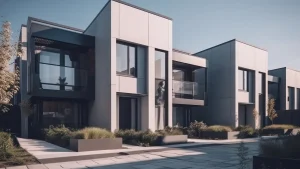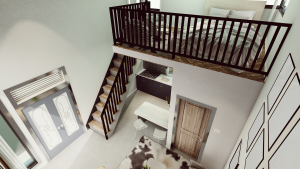As architects, we have a responsibility to design spaces that are accessible and inclusive for all individuals, regardless of their physical abilities. While accessibility requirements are often viewed as a set of regulations to be followed, creating truly inclusive spaces requires a deeper understanding of the challenges faced by people with disabilities and the opportunities for design to address those challenges.
In this post, we will explore some key considerations for designing accessible spaces and some best practices for creating inclusive environments.
Understanding the Challenges
When designing for accessibility, it is essential to have a thorough understanding of the challenges that people with disabilities may face in navigating physical spaces. Some of the most common challenges include:
- Limited mobility: People with limited mobility may have difficulty navigating stairs, uneven surfaces, or spaces that are too narrow.
- Visual impairments: People with visual impairments may have difficulty navigating spaces that are poorly lit, or that have obstacles in their path.
- Hearing impairments: People with hearing impairments may have difficulty communicating with others or understanding important auditory cues.
- Cognitive impairments: People with cognitive impairments may have difficulty processing complex information or understanding complex spatial layouts.
Designing for Accessibility: Best Practices
Designing for accessibility requires a thoughtful approach that takes into account the specific needs of the individuals who will be using the space. Some best practices for creating accessible spaces include:
-
Focus on Universal Design
Universal design is an approach to design that aims to create products and spaces that are usable by the widest range of people possible, regardless of their abilities. By focusing on universal design principles, architects can create spaces that are not only accessible but also welcoming and inclusive for everyone.
-
Prioritise Functionality
When designing accessible spaces, it is essential to prioritise functionality over aesthetics. For example, while a staircase may look beautiful, it may not be the most functional option for people with limited mobility. By prioritising functionality, architects can create spaces that are not only accessible but also efficient and practical.
-
Provide Clear Wayfinding
Clear wayfinding is essential for creating accessible spaces. People with disabilities may have difficulty navigating complex or unfamiliar spaces, so it is important to provide clear signage and other wayfinding cues to help them navigate. For example, tactile indicators can be used to help people with visual impairments navigate a space.
-
Consider Acoustics
Acoustics are an often-overlooked aspect of designing for accessibility. People with hearing impairments may have difficulty understanding speech or other auditory cues in spaces with poor acoustics. By incorporating acoustic design principles into the design process, architects can create spaces that are not only accessible but also comfortable and welcoming for all individuals.
-
Involve People with Disabilities in the Design Process
Perhaps the most important best practice for designing accessible spaces is to involve people with disabilities in the design process. By working with individuals who have firsthand experience of the challenges faced by people with disabilities, architects can gain valuable insights and create spaces that are truly inclusive.
Conclusion
Designing for accessibility requires a thoughtful and inclusive approach that takes into account the specific needs of the individuals who will be using the space. By prioritising functionality, providing clear wayfinding, and involving people with disabilities in the design process, architects can create spaces that are not only accessible but also welcoming and inclusive for all individuals. As architects, it is our responsibility to design spaces that are not only beautiful but also functional and inclusive, and designing for accessibility is an essential part of that responsibility.







